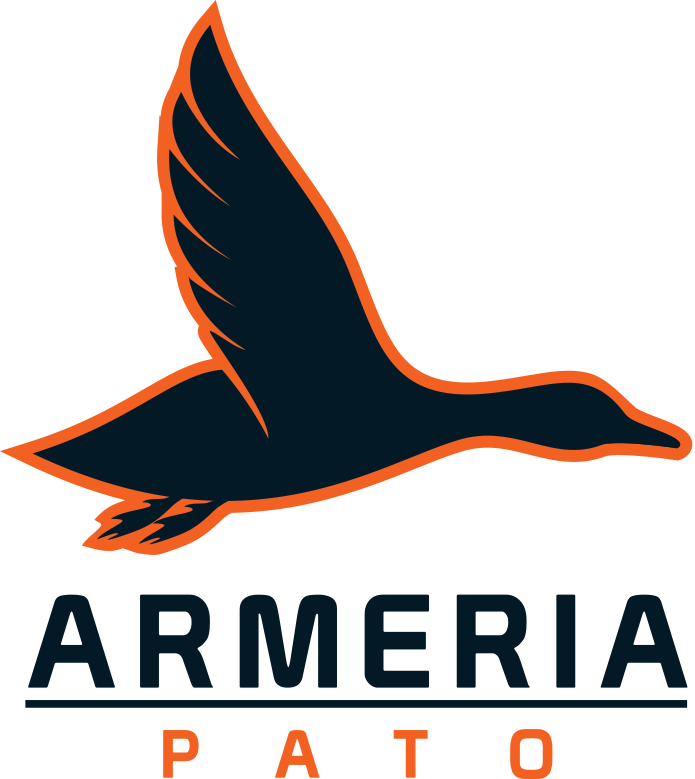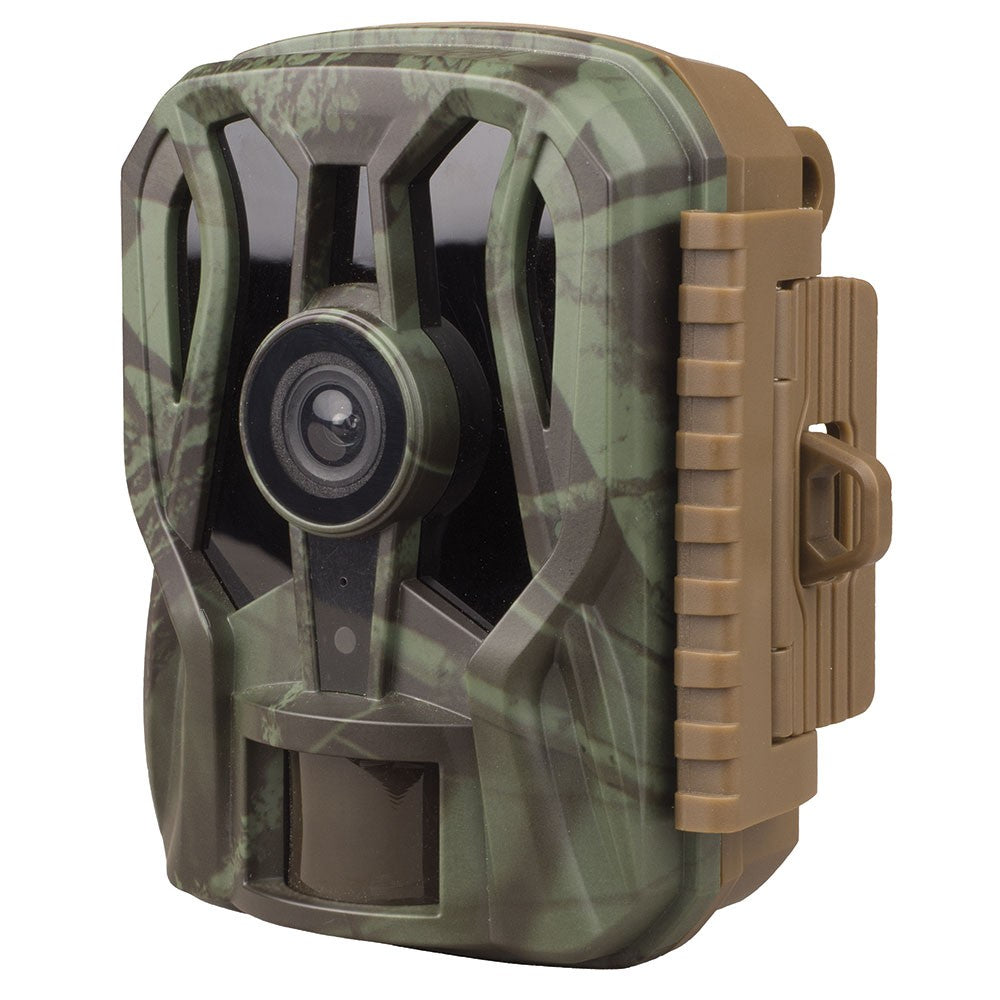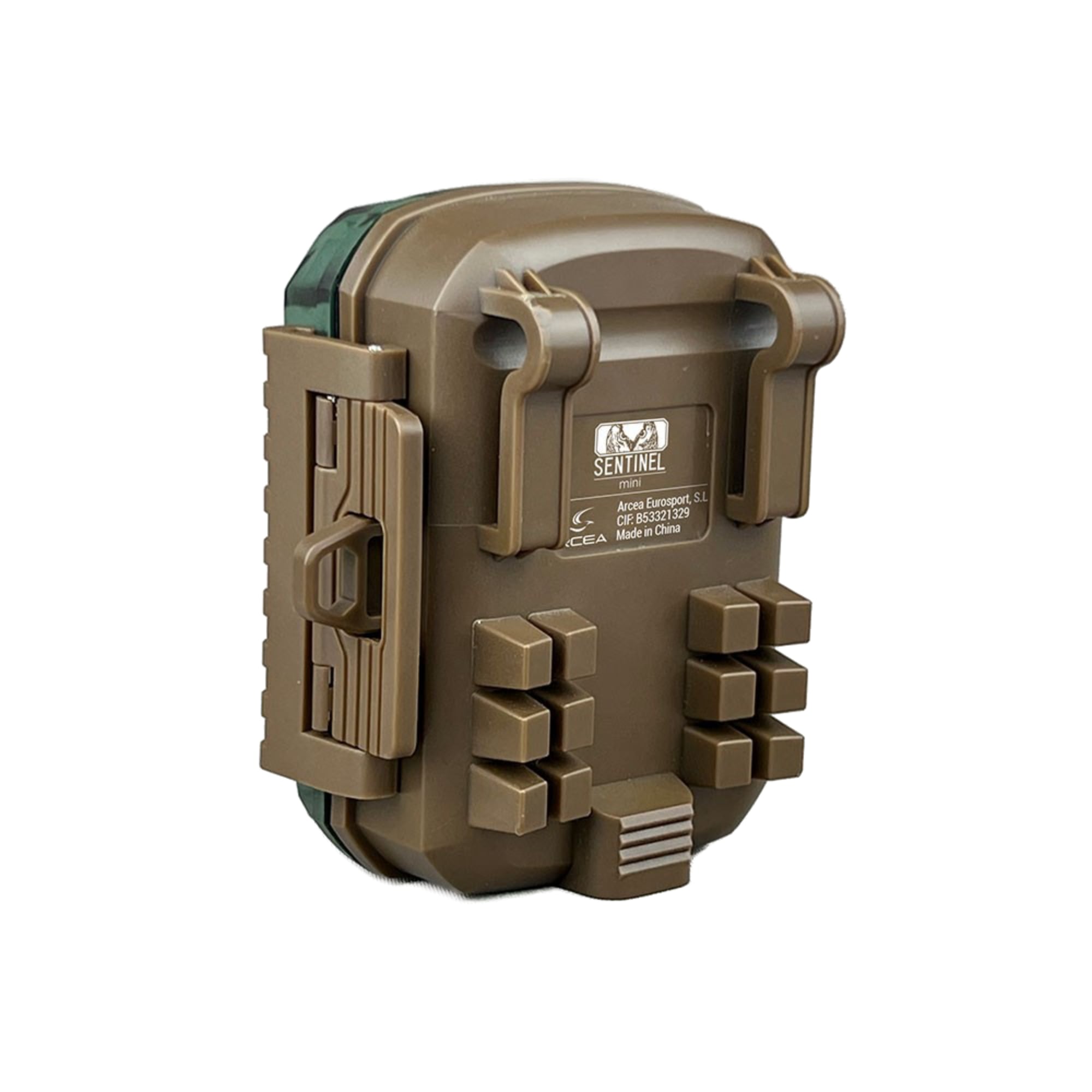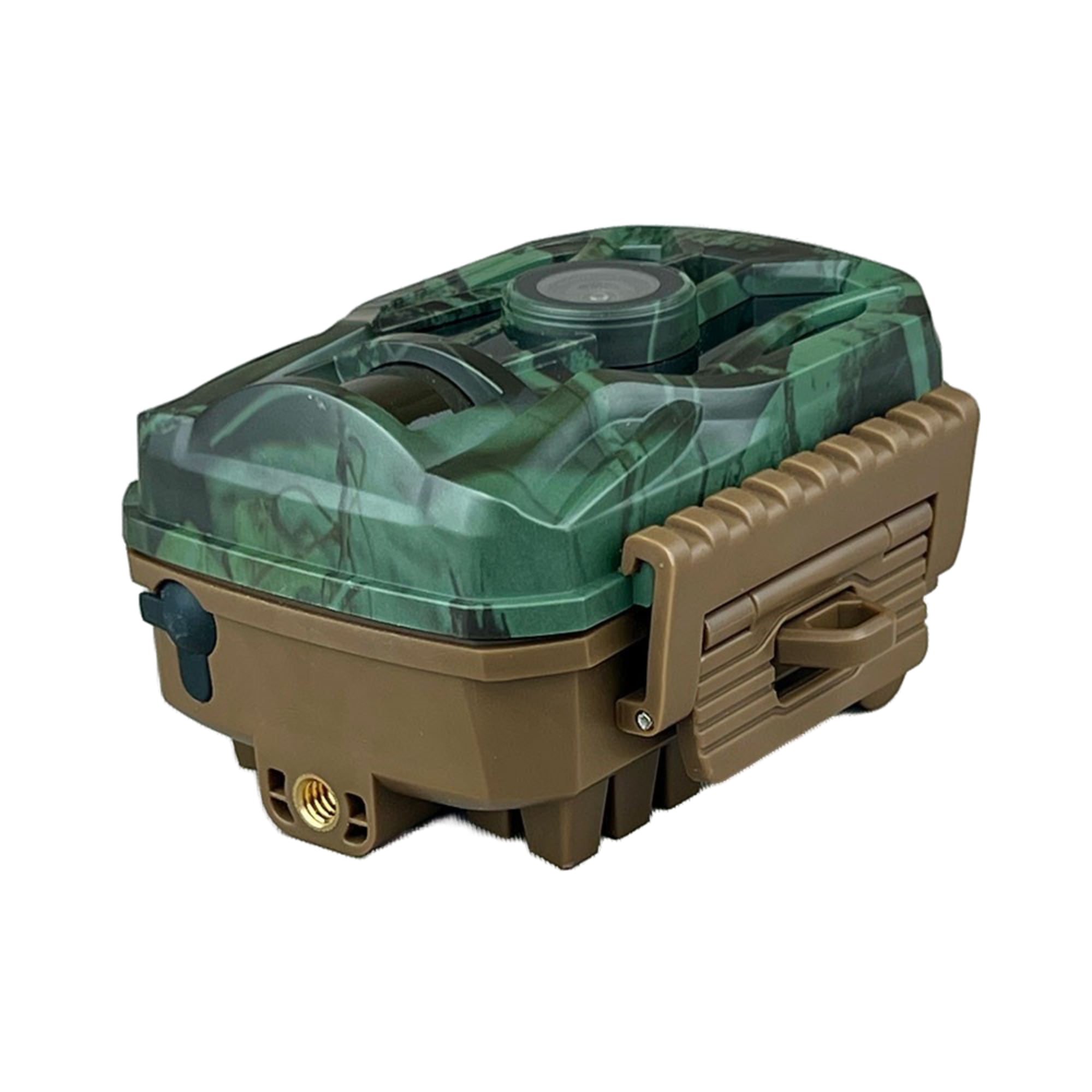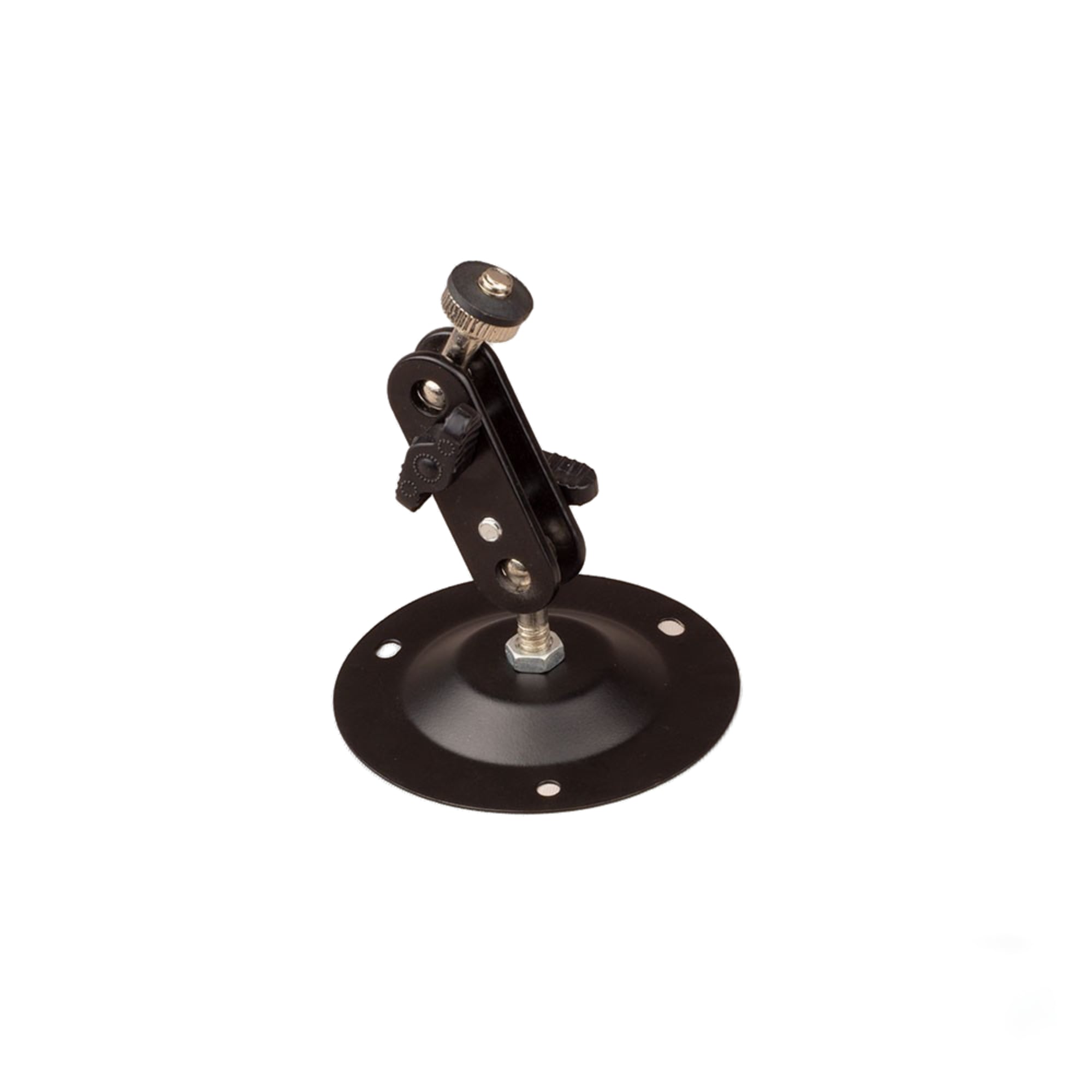Sentinel II Camera Trap
Sentinel II is an automatic surveillance camera that monitors an area of interest through a passive infrared (PIR) sensor that is activated by detecting movement, whether of people or animals. When it detects movement, the camera automatically takes photos and/or videos.
It offers the same reliability and ease of use as its predecessor but with higher resolution, plus an improved sensor and invisible flash.
- Improved optics offering a wider viewing angle and better resolution.
- Improved sensor for a more precise detection of movements.
- Strap fixing system (included)
- Fixing system with a screw-in base (included) that allows the camera to be placed on trees, walls or ceilings.
- Design with a better finish and less shine that allows a more camouflaged placement.
- Daytime color photos and videos.
- Black and white nocturnes.
- PIR angle/range: 90°/25m.
- 42 IR LEDs 850nm. Virtually invisible. They glow very dimly in infrared light.
- Adjustable PIR sensitivity.
- 20Mpx photos.
- 1080 HD video with audio.
- Lens angle of view: 80°
- Shutter speed: <0.4 sec
- Interval between shots: 5 sec - 1h
- Lens aperture: F:2.0
- Timelapse function.
- Burst mode: up to 3 photos.
- Adjustable video duration:
- 10 sec - 10 min.
- Programmable on and off time.
- Compatible with Micro SD cards up to 32Gb.
- Water and snow resistant (IP65)
- 2'' TFT LCD screen.
- Thread suitable for tripods.
- Works with 4 or 8 AA 1.5V batteries or DC 6V adapter.
- Integrated USB port.
- Autonomy: 8 months on standby.
- Dimensions: 136x83x55mm.
What is infrared light?
Light visible to the naked eye is called visible light. The fact that it is observable and presents different colors is due to the wavelength of the light itself. There are no exact limits on the visible spectrum: the typical human eye will see wavelengths from 380 to 750 nm, which will correspond to the following colors (ordered from shortest to longest wavelength): violet, blue, cyan, green, yellow, orange and red.
Light with a wavelength longer than red light is called infrared light. Infrared rays cannot be seen with the naked eye.
What is 850nm LED infrared light?
The light intensity of the 850nm infrared LED in the visible part (less than 760nm) does not reach 0, in other words, it still emits weak visible light, and the human eye can still feel the weak light.
What is 940nm LED infrared light?
The 940nm LED infrared night vision light has a peak intensity of 940nm, which is far from the wavelength range of visible light. When the light intensity reaches 0 in the visible wavelength range, it means that the minimum wavelength is longer than the visible long wavelength of 760nm. Therefore, 940nm infrared light is invisible to the naked eye.
Differences Between 850nm and 950nm Infrared LED Light
- Generally speaking, the higher the wavelength value, the lower the VF value under the same voltage. Under the condition of 20MA voltage, the value of VF of 850nm is about 1.35-1.55V; and the VF value of 940nm is about 1.10-1.25V. Among them, of course, the value of VF will be different for different voltages.
- The radiation intensity of 850 is about 2-3 times that of 940. If the radiation intensity is high, the brightness will be higher.
- The 850nm infrared light chip has a visible red dot, while the main advantage of the 940nm wavelength is that the IR LED does not produce any visible light. In other words, they are completely invisible and can be used in applications that require more privacy. In fact, many people refer to it as "Covert IR." This type of IR is also useful when red light can be mistaken for a signal and cannot be used. The disadvantage of 940nm is that its efficiency is reduced by about 30-40%, and the illumination distance is smaller and smaller.
